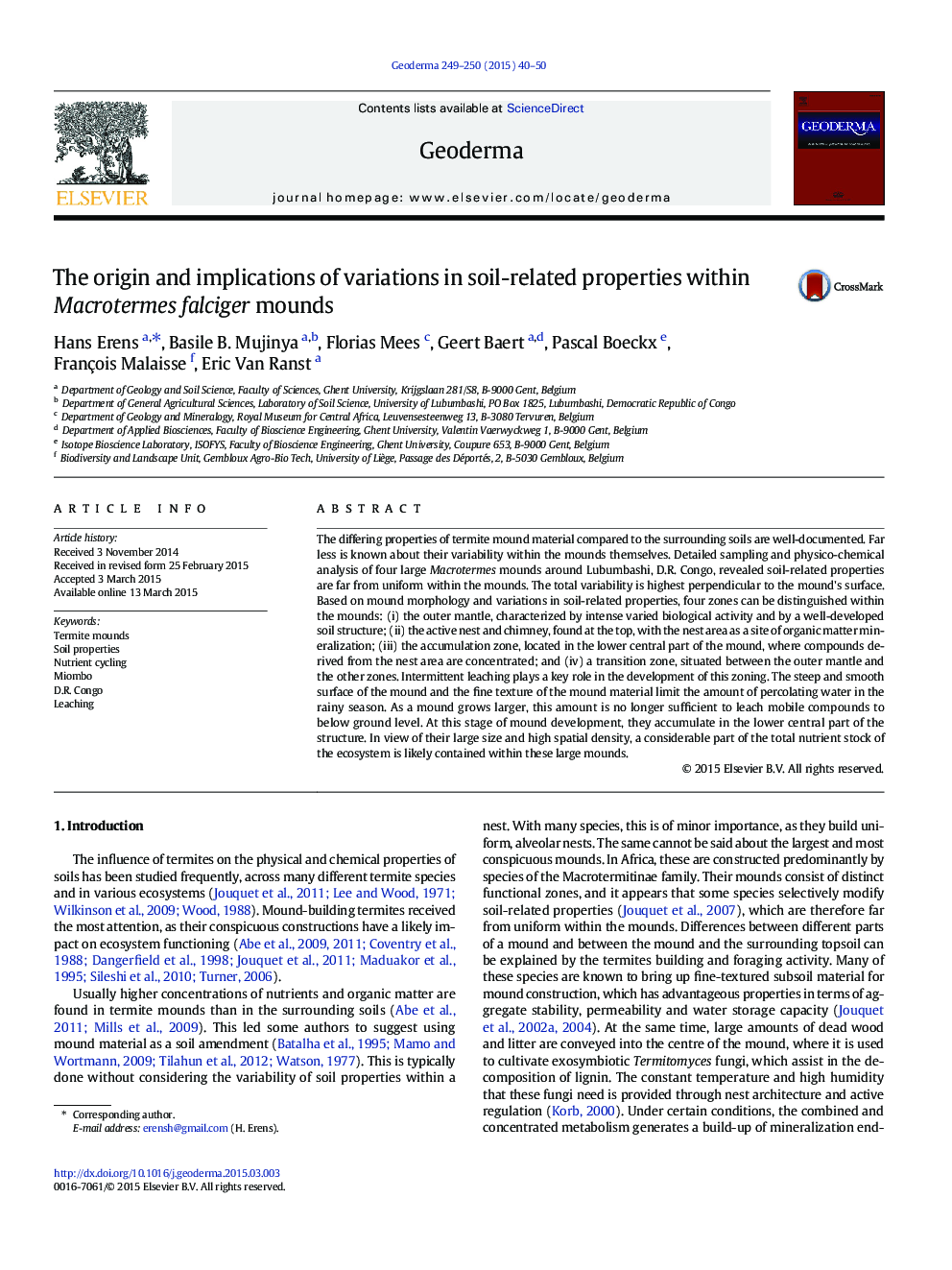| Article ID | Journal | Published Year | Pages | File Type |
|---|---|---|---|---|
| 4573158 | Geoderma | 2015 | 11 Pages |
•Soil-related properties vary considerably within large termite mounds.•Four distinct mound zones can be distinguished.•Intermittent leaching plays a key role in the development of this zoning.•These mounds likely contain a considerable part of the ecosystem's nutrient stock.
The differing properties of termite mound material compared to the surrounding soils are well-documented. Far less is known about their variability within the mounds themselves. Detailed sampling and physico-chemical analysis of four large Macrotermes mounds around Lubumbashi, D.R. Congo, revealed soil-related properties are far from uniform within the mounds. The total variability is highest perpendicular to the mound's surface. Based on mound morphology and variations in soil-related properties, four zones can be distinguished within the mounds: (i) the outer mantle, characterized by intense varied biological activity and by a well-developed soil structure; (ii) the active nest and chimney, found at the top, with the nest area as a site of organic matter mineralization; (iii) the accumulation zone, located in the lower central part of the mound, where compounds derived from the nest area are concentrated; and (iv) a transition zone, situated between the outer mantle and the other zones. Intermittent leaching plays a key role in the development of this zoning. The steep and smooth surface of the mound and the fine texture of the mound material limit the amount of percolating water in the rainy season. As a mound grows larger, this amount is no longer sufficient to leach mobile compounds to below ground level. At this stage of mound development, they accumulate in the lower central part of the structure. In view of their large size and high spatial density, a considerable part of the total nutrient stock of the ecosystem is likely contained within these large mounds.
